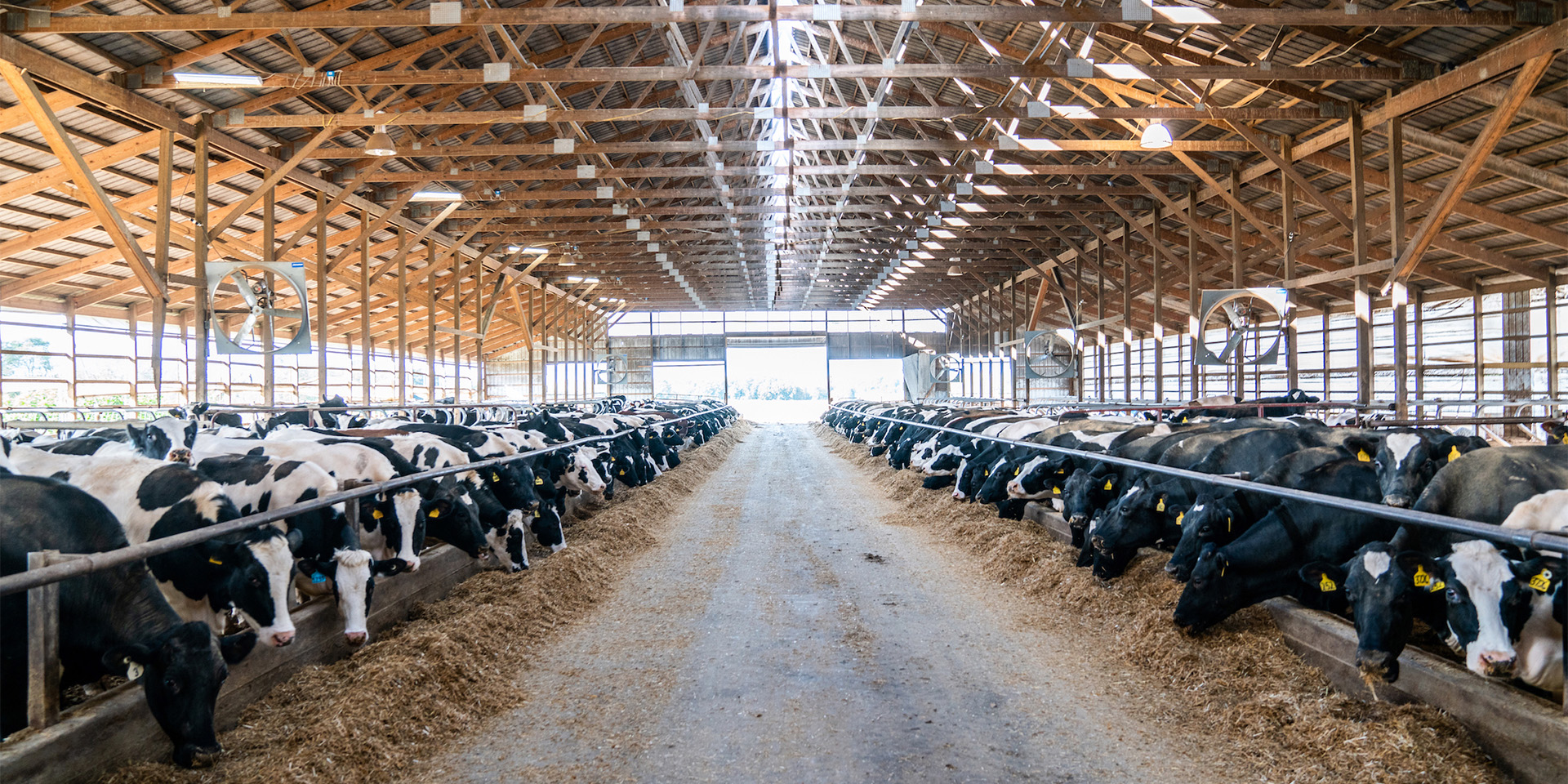As soon as the words left his mouth, Kienan Gridley acknowledged the popularity of the phrase ‘you can’t manage what you don’t measure,’ to explain the importance of making data-driven decisions for livestock nutrition.
After all, mixing, weighing and rationing feed can account for more than half of producers’ operating costs.
“Feeding a herd of cattle is an expensive proposition,” says Gridley, a nutritionist with Rapp Dairy Nutrition in Fabius, N.Y. “It’s in everyone’s best interest to make that process as economic and efficient as possible with technology.”

The ability to accurately calculate dry matter efficiency (DME), minimize waste (shrink) and stretch feed inventory by precisely sizing rations and control overall costs with analytical tools designed specifically for the livestock industry keep stakeholders in sync.
Corrective Measures
Working with dairy producers in central New York, Gridley sees a growing appetite for feed management software to reduce the risk of human error that can put a costly kink in the production chain.
“When nutritionists formulate feed rations, we’re getting them down to hundreths-of-a-pound,” Gridley says. “But if moisture corrections aren’t made, or in some cases even taken on the farm, that can lead to a breakdown in the integrity of the formulated rations.”
In other words, if a ration is precisely formulated, but the wrong or no moisture measurements are taken, the nutritional value of the feed can be off several percentage points. Even a 1-2% change in forage moisture content can influence the quality and quantity of a cow’s milk production and the profitability of a farm.
A solution Gridley found to help producers be more vigilant with DME management is Topcon’s TAP FEED software. The platform can create and provide sharable reports on dry matter intake per head, in addition to operator accuracy and ingredients usage.
“The automation makes it easier and encourages producers to take those moisture readings and track refusals more frequently,” Gridley says. “And that takes some of the burden off nutritionists because the analytics allow for real-time adjustments.”
He adds that it’s been a useful tool for accurately modeling and dosing micronutrients. Better management of nutritional variables ensures cows consume the required rations for quality milk production.
“There’s definitely a need for the software, especially on dairies with less than a thousand cows that maybe couldn’t justify an investment in feed tracking technology in the past,” Gridley says.
For Wagner Farms, which milks 400 cows three times a day, the recent addition of TAP FEED is creating collaboration between the family dairy and its nutritionist.
“We consider ourselves a high-output herd and average over 100 pounds of milk per cow,” says producer Keith Wagner, who manages the Poestenkill, N.Y., operation with his father, Peter. “Some of the early value we’ve gotten from the software is our nutritionist tracking feeding data more accurately.”
Analytics are unlocking more economic insights as well for Wagner Farms. The operation tracks financials through an online dairy dashboard, which also aggregates data from similarly sized dairies for comparative analysis.
“One area that has always been untracked for us was income over feed cost,” Wagner says. “While we have our concentrated feed costs calculated, we didn’t have that same depth for our forages. Now we do, and that allows us to have a more in-depth picture of how we compare to other operations.”
“The automation makes it easier and encourages producers to take those moisture readings and track refusals more frequently.”
Kienan Gridley - nutritionist with Rapp Dairy Nutrition
‘Cows Love Consistency’
The ability to make rapid revisions to a feed mix helps preserve nutritional value for livestock and retain ROI for producers. But advanced feed management tools also support a proactive vs. reactive approach to ensure the accuracy and consistency of rations.

“We’re used to being firefighters in this industry,” says Nathan Meeuwse, co-founder of Michigan-based Cornerstone Ag Management. “But feed management technology is allowing us to be better fire preventers.”
With more than a decade of experience as a nutritionist, Meeuwse is familiar with an old industry adage that underscores inefficiencies in the traditional ration planning process. While nutritionists formulate a specific livestock diet, it can vary from the amount cows are fed and what they actually eat.
“Instead of one diet, sometimes there’s actually three,” he says.
Ideally, the total mixed ration (TMR) should retain the recommended balance of nutrients, quality and weight from formulation to feeding. But that isn’t always the case.
“Nutritionists balance diets down to the third decimal point, and the feed mixes are picked up with a front end loader,” Meeuwse says. “So traditionally, there's an opportunity to lose the precision of those rations.”
And for years, nutritionists formulated rations with pen and paper, then mailed them to producers with no assurance that handwritten recommendations matched the diet consumed by cows.
In 2012, Meeuwse began using Topcon’s TMR Tracker which has helped digitally preserve the precision of feed formulations. He enters feed ingredients, mixer information and rations and the system accurately tracks variations during loading and feeding.
“Cows love consistency. We’ve been able to significantly minimize that margin of error, and everyone has a lot more confidence that what we want cows to eat is what they are being fed,” Meeuwse says. “They get a more consistent, balanced diet, day in and day out.”
Six months into their experience using TAP FEED, Wagner says the operation is getting more consistent data tracking forages from the feed bunker to the truck to calves.
“Our nutritionist has a much better idea of what is actually making it through to the animals and how to project what will be left in the box,” he says. “We’ve always been of the opinion that feeding is one of the most important jobs and we want to know exactly what is being delivered to the cows as well as the shrink.”
“We’re used to being firefighters in this industry. But feed management technology is allowing us to be better fire preventers.”
Nathan Meeuwse, co-founder of Michigan-based Cornerstone Ag Management
Manage Shrinking Inventory
An underutilized feature of feed management software, according to Meeuwse, is its ability to weigh incoming ingredients that can extend feed inventory and account for shrink on the farm.

“Both of those will become hot topics because lowering shrink will allow producers to carry over more feed at the end of the year,” he says. “The typical number nobody wants to acknowledge is 10-15% shrink on commodities in open bays, which in the long-run, that loss comes directly out of a producer’s pocket.”
In other words, for every $100 spent on feed, at least $10 could be lost to shrink. Meeuwse relies on the TMR Tracker to help producers be more economic with inventory by weighing incoming ingredients and tracking weekly and year-over-year shrink.
If a producer spent $100,000 on feed in a year, Meeuwse says they can account for about $10,000 of shrink. And, if a farm calculates a feed usage rate of 15 tons per day with 150 tons of inventory, it knows there is a 10-day window to assess future need and cost.
“We can plan to load every three or seven days and communicate that enough in advance to commodity loaders so there isn’t a delay,” he says. “As we’ve seen feed costs increase and a decrease in available forages, I expect to see more adoption of feed technology for inventory management.
“As an industry, we invest in cow comfort and reproduction because they impact the bottom-line. The same is true of livestock nutrition.”
















